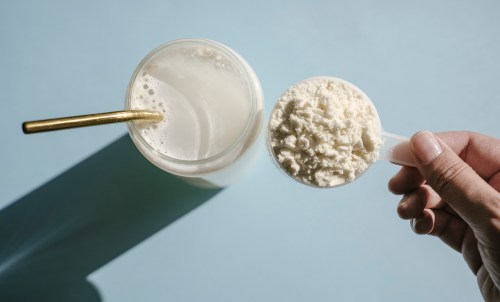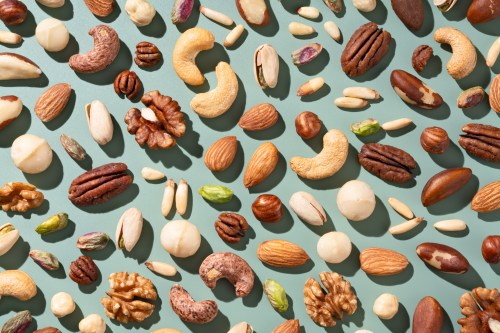Of the seemingly endless superfoods crowding grocery store aisles and vying for real estate in your pantry, quinoa is one that is as venerable as it is delicious. Thanks to its versatility, bounty of health benefits, and delicious nutty flavor, this seed has been cultivated for literal millennia. Quinoa can serve as a naturally gluten-free base for a stew, curry, salad, or hot cereal, which makes it an appropriate addition to practically every meal. It includes all nine amino acids, too, so consider this pantry staple a perfect source of complete plant-based protein.
Experts in This Article
David Zamudio is the Executive Chef at Alma Cucina Latina.
Patrick Curran is the Executive Chef at Cafe Riggs in Washington, DC.
Taylor Burlingame is the Executive Chef at The DuPont Circle Hotel
As a result, it comes as little surprise that quinoa is about as ubiquitous in restaurants as it is in homes across the country (and indeed, the world—Peru, the native home of quinoa, is the largest producer of the ingredient). And while bowl of homemade quinoa alongside seared salmon always hits the spot, this is one dish that unfailingly tastes better when ordered at a restaurant. Ever wondered why, and subsequently wished you could nail that perfectly light, tender texture like a professional chef?
To clear things up, we chatted with a couple of chefs to learn exactly how they churn out foolproof batches of quinoa. Here, how to cook quinoa that’s perfectly fluffy and packed with flavor.
How to cook quinoa to perfection, according to professional chefs
1. Use the large-sized pot with a well-fitting lid.
Of course, the right inputs make for the best outputs. This applies to not only your quinoa, but also to the tools that you use to cook the seeds. “For our quinoa, we use a standard six-quart pot with a fitting lid,” says Taylor Burlingame, head chef at the Dupont Circle Hotel in Washington, DC. Having a pot with a lid is key to ensuring that your cooking liquid doesn’t evaporate too quickly, which would lead to a dry finished dish.
Size matters, too. “Make sure you use a pot that has enough room for your quinoa to simmer and expand,” says Patrick Curran, executive chef at DC’s Cafe Riggs. While you may not need six quarts—Curran suggests using a four-quart sauce pot when cooking quinoa at home—always adjust the volume of your pot based on the volume of quinoa you’re cooking.
2. Rinse, measure, and toast your quinoa.
Even the most advanced home cooks need to pull out their measuring cups every once in awhile, and given that making perfect quinoa requires the right ratios, this probably isn’t the time for eyeballing. “We use a ratio of one part quinoa to one and three-quarters part veggie stock,” Burlingame says.
Also, don’t just boil everything together. Instead, you’ll first want to prep your quinoa by washing it. “Rinse and wash your quinoa after it has been measured,” says David Zamudio, the executive chef at Alma Cocina Latina in Baltimore, MD. This helps to remove any bitter flavors that the seed might carry with it.
Chef Curran then takes the extra step of adding the rinsed (and dried) quinoa to a dry pan, and toasts the seeds for about a minute until they’re slightly aromatic. This simple step will make a tremendous difference in the flavor of your final dish: think more robust, rich, and roasty.
3. Boil before adding the quinoa.
One of the most basic bits of advice the chefs shared when explaining how to cook quinoa is to be sure not to overcook it. Sounds obvious, but you’d be surprised how often it happens. A good way to avoid the mushy, sticky texture of overcooked quinoa is to boil your liquid first, then add your seeds. Be sure to bring the liquid to a full rolling boil, and don’t forget to stir frequently to ensure even cooking.
4. Season and cover your quinoa, then stir in some fat.
Once the quinoa and liquid are combined and happily rolling away, add salt and pepper. Then, turn the heat down to medium low and cover with your tight-fitting lid for about 10 to 15 minutes, depending on how large a batch you’re making. “Once your quinoa is fully cooked, add a pat of butter or a drizzle of olive oil,” Zamudio recommends.
5. Fluff, then zhuzh.
“Once all the liquid is absorbed, let your quinoa sit so it can cool for a minute before fluffing with a fork,” Burlingame recommends. At this point, you’re ready to either store or serve, but Zamudio has a few suggestions to take your quinoa game to the next level. “To elevate a traditional quinoa recipe, you can make it more of a risotto by adding cream and vegetables,” he says. Simply replace part of the cooking liquid with cream, and stir in whatever fresh produce you have in the fridge.
“Quinoa doesn’t absorb flavor the way rice does,” Zamudio says. “This means you can add any roasted or sautéed vegetables, herbs, dressings, or other ingredients like meat or cheese once your quinoa is fully cooked to get the best results,” he suggests. “For example, at Alma Cocina Latina, we make the quinoa first, then add half and half, goat cheese, salt, pepper, chives, pan-seared mushrooms, and sofrito.”
Curran, on the other hand, has some seasonal favorites. “My go-to at this time of year is a red wine vinaigrette with tomatoes, cucumbers, mint, lemon zest, feta, and some grilled chorizo, if I have it on hand.”
6. Try something new.
Armed with these chef-approved tips, you’re ready to start cooking quinoa like a pro. And BTW, never be afraid to try other cooking techniques beyond simply boiling it. “You can add a great textural addition to salads and other dishes by frying or puffing quinoa,” says Curran.
Now that you’ve nailed your quinoa, you’re going to have no choice but to get creative. How else are you going to be able to excuse eating it for every meal? We recommend starting with one of these delicious quinoa recipes.
Oh hi! You look like someone who loves free workouts, discounts for cutting-edge wellness brands, and exclusive Well+Good content. Sign up for Well+, our online community of wellness insiders, and unlock your rewards instantly.
Sign Up for Our Daily Newsletter
Get all the latest in wellness, trends, food, fitness, beauty, and more delivered right to your inbox.
Got it, you've been added to our email list.










